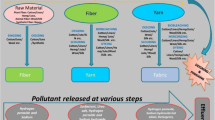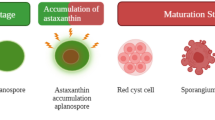Abstract
Catalase is an important antioxidant protein that can protect organisms against various forms of oxidative damage by eliminating hydrogen peroxide. In this study, the catalase cDNA of Paphia textile (PtCAT) was cloned using RTPCR and rapid amplification of cDNA ends (RACE). PtCAT is 1 921 bp long and consists of a 5′-UTR of 50 bp, a 3′-UTR of 349 bp, and an ORF of 1 542 bp that encodes 513 amino acids with a molecular weight of 58.4 kD and an estimated isoelectric point of 8.2. Sequence alignment indicated that PtCAT contained a highly conserved catalytic signature motif (61FNRERIPERVVHAKGAG77), a proximal heme-ligand signature sequence (352RLFSYSDP359), and three catalytic amino acid residues (H72, N145, and Y356). PtCAT also contains two putative N-glycosylation sites (34NKT36 and 437NFT439) and a peroxisome-targeting signal (511AQL513). Furthermore, PtCAT shares 53%–88% identity and 29%–89% similarity with other catalase amino acid sequences. PtCAT mRNA was present in all tested organs, including the heart, digestive gland, adductor muscle, gonad, gill, and mantle, but its expression was highest in the digestive gland. High-temperature-induced stress produced two expression patterns of PtCAT mRNA: first, an initial up-regulation followed by a down-regulation in the heart, digestive gland, and gonad and, second, consistent down-regulation in all other organs. These results demonstrate that PtCAT is a typical member of the catalase family and might be involved in the responses to harmful environmental factors.
Similar content being viewed by others
References
Arockiaraj J, Easwvaran S, Vanaraja P, et al. 2012. Molecular cloning, characterization and gene expression of an antioxidant enzyme catalase (MrCat) from Macrobrachium rosenbergii. Fish Shellfish Immunol, 32(5): 670–682
Bachère E, Gueguen Y, Gonzalez M, et al. 2004. Insights into the antimicrobial defense of marine invertebrates: the penaeid shrimps and the oyster Crassostrea gigas. Immunol Rev, 198(1): 149–168
Bonini M G, Siraki A G, Atanassov B S, et al. 2007. Immunolocalization of hypochlorite-induced, catalase-bound free radical formation in mouse hepatocytes. Free Radic Biol Med, 42(4): 530–540
Borkovic S S, Šaponjic J S, Pavlovic S Z, et al. 2005. The activity of antioxidant defence enzymes in the mussel Mytilus galloprovincialis from the Adriatic Sea. Comp Biochem Physiol C Toxicol Pharmacol, 141(4): 366–374
Borkovic-Mitic S S, Kovacevic T B, Perendija B R, et al. 2011. Superoxide dismutase and catalase activities in the digestive gland and gills of the freshwater bivalve Unio pictorum from the Sava River. Arch Biol Sci, 63(1): 185–192
Bryant D D, Wilson G N. 1995. Differential evolution and expression of murine peroxisomal membrane protein genes. Biochem Mol Med, 55(1): 22–30
Chelikani P, Fita I, Loewen P C. 2004. Diversity of structures and properties among catalases. Cell Mol Life Sci, 61(2): 192–208
Ekanayake P M, De Zoysa M, Kang H S, et al. 2008. Cloning, characterization and tissue expression of disk abalone (Haliotis discus discus) catalase. Fish Shellfish Immunol, 24(3): 267–278
Guemouri L, Artur Y, Herbeth B, et al. 1991. Biological variability of superoxide dismutase, glutathione peroxidase, and catalase in blood. Clin Chem, 37(11): 1932–1937
Guo Huayang, Zhang Dianchang, Cui Shuge, et al. 2011. Molecular characterization and mRNA expression of catalase from pearl oyster Pinctada fucata. Mar Genom, 4(4): 245–251
He Yan, Jouaux A, Ford S E, et al. 2015. Transcriptome analysis reveals strong and complex antiviral response in a mollusc. Fish Shellfish Immunol, 46(1): 131–144
Hooper C, Day R, Slocombe R, et al. 2007. Stress and immune responses in abalone: limitations in current knowledge and investigative methods based on other models. Fish Shellfish Immunol, 22(4): 363–379
Kawasaki L, Aguirre J. 2001. Multiple catalase genes are differentially regulated in Aspergillus nidulans. J Bacteriol, 183(4): 1434–1440
Khessiba A, Roméo M, Aïssa P. 2005. Effects of some environmental parameters on catalase activity measured in the mussel (Mytilus galloprovincialis) exposed to lindane. Environ Pollut, 133(2): 275–281
Kuchel R P, Nair S, Raftos D A. 2012. Changes in the transcriptional expression of oxidative stress response genes in Akoya pearl oysters (Pinctada fucata) exposed to air and mechanical agitation. Aquaculture, 362–363: 33–38
Lee S Y, Söderhäll K. 2002. Early events in crustacean innate immunity. Fish Shellfish Immunol, 12(5): 421–437
Letunic I, Copley R R, Pils B, et al. 2006. SMART 5: domains in the context of genomes and networks. Nuclic Acids Res, 34(S1): D257–D260
Li Zhimin, Liu Zhigang, Han Weixian. 2011. Salinity adaptability of Paphia textzle spats at different salinity levels. Mar Sci (in Chinese), 35(10): 96–102
Li Chenghua, Ni Duojiao, Song Linsheng, et al. 2008. Molecular cloning and characterization of a catalase gene from Zhikong scallop Chlamys farreri. Fish Shellfish Immunol, 24(1): 26–34
Malhotra J D, Kaufman R J. 2007. Endoplasmic reticulum stress and oxidative stress: a vicious cycle or a double-edged sword?. Antioxid Redox Signal, 9(12): 2277–2293
Ministry of Agriculture of China. 2013. China Fishery Statistics Year-book: 2013 (in Chinese). Beijing: China Agriculture Press, 23–25
Muse K E, Oberley T D, Sempf J M, et al. 1994. Immunolocalization of antioxidant enzymes in adult hamster kidney. Histochem J, 26(9): 734–753
Nakamura H, Nakamura K, Yodoi J. 1997. Redox regulation of cellular activation. Annu Rev Immunol, 15(1): 351–369
Nordberg J, Arnér E S J. 2001. Reactive oxygen species, antioxidants, and the mammalian thioredoxin system. Free Radic Biol Med, 31(11): 1287–1312
Orbea A, Fahimi H D, Cajaraville M P. 2000. Immunolocalization of four antioxidant enzymes in digestive glands of mollusks and crustaceans and fish liver. Histochem Cell Biol, 114(5): 393–404
Piano A, Asirelli C, Caselli F, et al. 2002. Hsp70 expression in thermally stressed Ostrea edulis, a commercially important oyster in Europe. Cell Stress Chaperones, 7(3): 250–257
Putnam C D, Arvai A S, Bourne Y, et al. 2000. Active and inhibited human catalase structures: ligand and NADPH binding and catalytic mechanism. J Mol Biol, 296(1): 295–309
Rhee S G, Yang K S, Kang S W, et al. 2005. Controlled elimination of intracellular H2O2: regulation of peroxiredoxin, catalase, and glutathione peroxidase via post-translational modification. Antioxid Redox Signal, 7(5–6): 619–626
Schmittgen T D, Livak K J. 2008. Analyzing real-time PCR data by the comparative CT method. Nat Protoc, 3(6): 1101–1108
Tamura K, Dudley J, Nei M, et al. 2007. MEGA4: molecular evolutionary genetics analysis (MEGA) software version 4.0. Mol Biol Evol, 24(8): 1596–1599
Thompson J D, Gibson T J, Plewniak F, et al. 1997. The CLUSTAL_X windows interface: flexible strategies for multiple sequence alignment aided by quality analysis tools. Nucleic Acids Res, 25(24): 4876–4882
Veal E A, Day A M, Morgan B A. 2007. Hydrogen peroxide sensing and signaling. Mol cell, 26(1): 1–14
Vidal-Liñán L, Bellas J, Campillo J A, et al. 2010. Integrated use of antioxidant enzymes in mussels, Mytilus galloprovincialis, for monitoring pollution in highly productive coastal areas of Galicia (NW Spain). Chemosphere, 78(3): 265–272
Vidal-Liñán L, Bellas J, Etxebarria N, et al. 2014. Glutathione S-transferase, glutathione peroxidase and acetylcholinesterase activities in mussels transplanted to harbour areas. Sci Total Environ, 470–471: 107–116
Wang Chao, Huan Pin, Yue Xin, et al. 2011. Molecular characterization of a glutathione peroxidase gene and its expression in the selected Vibrio-resistant population of the clam Meretrix meretrix. Fish Shellfish Immunol, 30(6): 1294–1302
Wang Chao, Yue Xin, Lu Xia, et al. 2013. The role of catalase in the immune response to oxidative stress and pathogen challenge in the clam Meretrix meretrix. Fish Shellfish Immunol, 34(1): 91–99
Wu Chenglong, Mai Kangsen, Zhang Wenbing, et al. 2010. Molecular cloning, characterization and mRNA expression of seleniumdependent glutathione peroxidase from abalone Haliotis discus hannai Ino in response to dietary selenium, zinc and iron. Comp Biochem Physiol C Toxicol Pharmacol, 152(2): 121–132
Yang Xilan, Li Gang, Wen Chungen, et al. 2011. A catalase from the freshwater mussel Cristaria plicata with cloning, identification and protein characterization. Fish Shellfish Immunol, 31(3): 389–399
Zamocky M, Furtmüller P G, Obinger C. 2008. Evolution of catalases from bacteria to humans. Antioxid Redox Signal, 10(9): 1527–1548
Zhang Yang, Fu Dingkun, Yu Feng, et al. 2011. Two catalase homologs are involved in host protection against bacterial infection and oxidative stress in Crassostrea hongkongensis. Fish Shellfish Immunol, 31(6): 894–903
Zhang Ying, Song Jinming, Yuan Huamao, et al. 2010. Biomarker responses in the bivalve (Chlamys farreri) to exposure of the environmentally relevant concentrations of lead, mercury, copper. Environ Toxicol Pharmacol, 30(1): 19–25
Author information
Authors and Affiliations
Corresponding author
Additional information
Foundation item: The National Natural Science Foundation of China under contract No. 31172397; the New Century Excellent Talents of Fujian Province University under contract No. JA14167; the Open Research Fund Program of Fujian Provincial Key Laboratory of Marine Fishery Resources and Eco-environment under contract No. Z814041.
Rights and permissions
About this article
Cite this article
Wu, X., Li, J., Tan, J. et al. Molecular cloning, characterization and expression analysis of a catalase gene in Paphia textile . Acta Oceanol. Sin. 35, 65–73 (2016). https://doi.org/10.1007/s13131-016-0829-6
Received:
Accepted:
Published:
Issue Date:
DOI: https://doi.org/10.1007/s13131-016-0829-6




